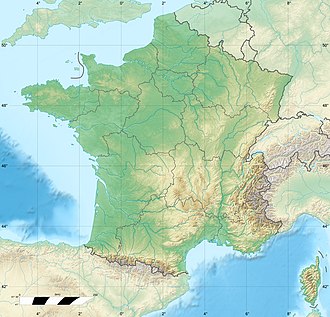You can help expand this article with text translated from the corresponding article in French. (September 2015)Click [show] for important translation instructions.
|
| Mont Donon | |
|---|---|
 Temple-like structure built in 1869 at the summit of Mont Donon to protect archeological remains | |
| Highest point | |
| Elevation | 1,009 m (3,310 ft) [1] |
| Prominence | 270 m (890 ft) |
| Coordinates | 48°30′50″N07°10′15″E / 48.51389°N 7.17083°E |
| Geography | |
| Location | Bas-Rhin, France |
| Parent range | Vosges Mountains |
Mont Donon is the highest peak in the northern Vosges. [2] It is a Category 2 climb in the Tour de France.
On Donon, there is an 80-metre-tall (260 ft) lattice tower for TV transmission. Its TV transmission antennas are covered by a polymeric cylinder, which gives its structure a characteristic shape.
An engraved block of sandstone near the summit commemorates the conception of Victor Hugo. [3]
Many archaeological remains of a Gallo-Roman sanctuary have been found on and around the top of the mountain. They are now displayed in the Musée archéologique de Strasbourg.





